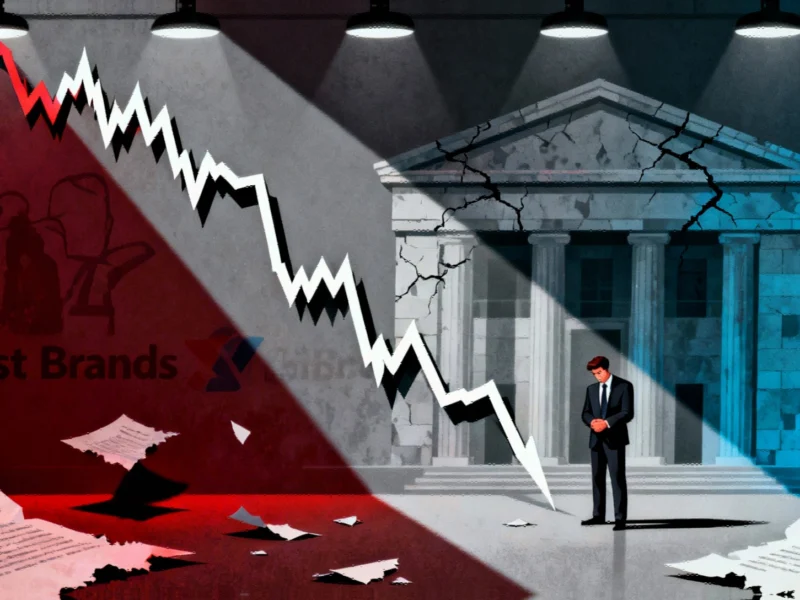The Temperature Sensitivity Factor in Financial Markets
As climate change accelerates, a groundbreaking study reveals that companies highly sensitive to temperature fluctuations are systematically overvalued by markets, delivering significantly lower returns than their climate-resilient counterparts. This research, spanning over five decades of U.S. stock market data, introduces a novel framework for assessing corporate vulnerability to climate-driven temperature changes that traditional valuation models have consistently overlooked.
Quantifying Climate’s Financial Impact
Researchers from the University of Exeter Business School developed a sophisticated “temperature sensitivity” metric that correlates abnormal temperature deviations with firm-level stock performance. Their analysis demonstrates that temperature-sensitive firms consistently underperform expectations while maintaining artificially high stock prices. Professor Chendi Zhang, Director of the Exeter Sustainable Finance Center, noted that despite growing investor attention to climate vulnerability in stock markets, traditional financial models fail to capture how temperature changes directly impact corporate profitability.
Sector Vulnerabilities and Risk Profiles
The study identifies significant variation in temperature sensitivity across industries, with agriculture and energy sectors facing direct physical climate risks, while other industries confront transition risks through regulatory changes, supply chain disruptions, and shifting consumer preferences. Highly sensitive companies not only demonstrate lower profitability but also pursue riskier business strategies, creating a compounding effect on their financial stability. This pattern echoes broader industry developments where environmental factors increasingly influence operational resilience.
Information Asymmetry in Climate Risk Assessment
Interestingly, the research uncovered significant disparities in how different market participants price temperature-related risks. Local investors, familiar with regional climate conditions, were more likely to accurately incorporate these factors into their valuations compared to non-local institutional investors. Similarly, sell-side equity analysts consistently misjudged the impact of temperature sensitivity, producing less accurate earnings forecasts for vulnerable firms. These findings highlight the critical need for better analytical frameworks in financial modeling.
Profitable Climate-Aware Investment Strategies
The researchers tested a climate-aware trading strategy that went long on low-sensitivity firms while shorting high-sensitivity counterparts. This approach generated an impressive annualized, risk-adjusted return of 4.1% over the 52-year sample period, demonstrating that temperature sensitivity represents a systematic market inefficiency. The strategy’s success suggests that advanced measurement techniques could revolutionize how investors assess environmental risks.
Implications for Sustainable Finance
This research arrives at a critical juncture in sustainable finance, as investors increasingly demand better tools for climate risk assessment. The temperature sensitivity measure, utilizing publicly available data, offers a practical solution for investors, analysts, and policymakers seeking to better evaluate climate-related financial exposures. As the financial community grapples with these challenges, regulatory scrutiny of corporate disclosures continues to intensify.
Future Directions in Climate Risk Management
The study’s findings have profound implications for corporate governance, investment management, and financial regulation. As temperature sensitivity becomes increasingly relevant to financial performance, companies must integrate climate resilience into their strategic planning. Meanwhile, the investment community must develop more sophisticated tools for assessing environmental risks, potentially drawing from computational innovations in other fields. The growing recognition of these interconnections reflects broader market trends toward comprehensive risk assessment.
Conclusion: Closing the Climate Valuation Gap
The persistent mispricing of temperature-sensitive firms represents both a market failure and an investment opportunity. As climate change accelerates, the financial impact of temperature variations will likely become more pronounced, making accurate climate risk assessment increasingly crucial for investment success. The development of robust, data-driven methodologies for evaluating temperature sensitivity marks a significant advancement in sustainable finance, offering stakeholders powerful new tools for navigating the complex intersection of climate change and financial markets.
This article aggregates information from publicly available sources. All trademarks and copyrights belong to their respective owners.
Note: Featured image is for illustrative purposes only and does not represent any specific product, service, or entity mentioned in this article.



